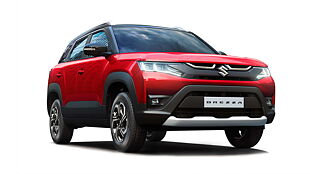Long Term Review 3

We have told you how the Maruti Suzuki Baleno is to live with in the city; it’s efficient, it has smart storage spaces, it’s well equipped, and it has comfy seats and spacious insides. It is also easy to drive, the 1.2-litre petrol engine doesn’t feel anemic, and apart from the stiff ride, there’s very little not to like about it. But, it might be a different story out on the highway with the Baleno being loaded to the brim and it having to tackle gradients and cross winds. Time to find out.
Cruising mode
With a full quota of load – five passengers and their weekend luggage – the Baleno doesn’t feel as energetic as it did in the city. It can still do a 120kmph cruise without a problem but to get back to this figure after having passed slow moving traffic or an intersection, does require the engine to be worked hard. Short shifts that worked so well in the city feel hugely inadequate on the highway. So, one must rev the Baleno to over 4000rpm to get the sort of drive that wouldn’t be termed boring.
Handling gradients is an even bigger challenge for a fully loaded Baleno. If the winding road isn’t too steep and the corners are flowing, the momentum pulls the car through without warranting too many downshifts. However, around steeper climbs, especially hairpins bends, the Baleno needs high revs and constant shifts to make decent progress.

Straight-line stability
Now, given the Maruti Baleno’s lack of weight, one might assume that the car won’t feel as stable as the competition especially at three digits speeds. But, it does, even with just the driver. It doesn’t feel flighty, isn’t affected by cross winds much, and is completely planted under quick lane change no matter what speed. It brakes well too. Here the lack of weight helps. It has strong braking power, which is easy to modulate, and there’s hardly a twitch even under hard braking.

Cornering fun
The lack of weight helps the Baleno’s cornering mannerisms as well. It’s not the quickest at turn in and it does roll a little but it’s never worrisome. It also handles a tight sequence of corners with quick direction changes without feeling skittish, even under mid-corner lift off. A loaded Baleno is a little more challenging around bends, however. The added weight affects the car’s rear end response. The suspension does pogo a little and it doesn’t track as well as a Baleno with just two occupants. Drop your pace though, and the Maruti feels a whole lot better.

So, there you have it: The petrol powered Baleno might not be an ideal long distance mile-muncher but be sensible with the car and it feels fine. More so, when you consider that the ride doesn’t get ruined with the full quota of people and luggage onboard; in fact it rides better in this situation at slower speeds. We also didn’t find the fuel efficiency go down the drain with a loaded car on the highway. The Baleno returned 14.3kmpl, which isn’t bad at all.
Photos by Kapil Angane
Click here to read our previous long term report of the Maruti Suzuki Baleno
Click here to read our comparison test between the Maruti Suzuki Baleno, Honda Jazz and Hyundai i20

![Maruti Suzuki Baleno [2015-2019] Image Maruti Suzuki Baleno [2015-2019] Image](https://imgd.aeplcdn.com/272x153/cw/ec/21723/Maruti-Suzuki-Baleno-Right-Front-Three-Quarter-147250.jpg?wm=0&q=80)























